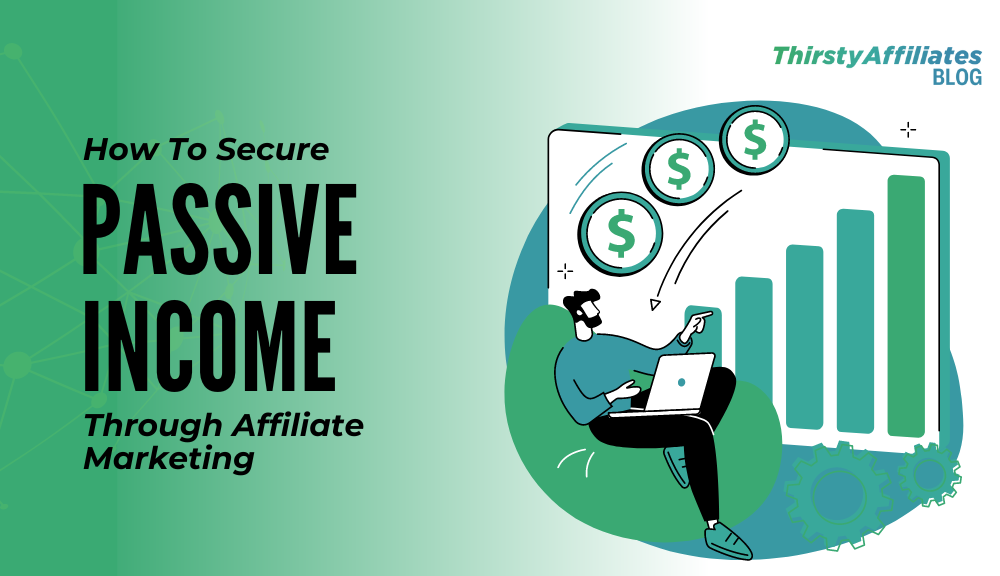Master Resale Rights (MRR) for busy entrepreneurs: Learn how to sell done-for-you digital products, create passive income, and build an online business without starting from scratch.

Key Takeaway
Smart passive income allows busy professionals to generate revenue with minimal ongoing effort. By strategically investing time upfront to establish sustainable income streams, you can create financial independence while maintaining your primary career.
Introduction to Smart Passive Income for Busy Professionals
Welcome to the definitive guide on smart passive income ideas specifically tailored for busy professionals. In today's fast-paced world, the concept of relying solely on a 9-to-5 job for financial security is becoming increasingly outdated. Smart passive income offers a compelling alternative, allowing you to build wealth without constantly trading your limited time for money.

For busy professionals juggling demanding careers, family responsibilities, and personal interests, creating passive income streams represents an intelligent approach to achieving financial freedom. This comprehensive guide explores how you can leverage your skills, knowledge, and resources to generate income that continues to flow even when you're not actively working.
By the end of this article, you'll have a deep understanding of various passive income strategies and practical ideas to implement in your busy life, enabling you to build a more secure financial future while maintaining focus on your career advancement.
What is Smart Passive Income?
Smart passive income refers to earnings generated with minimal ongoing effort and time investment. Unlike active income, which requires constant work and direct time-for-money exchange, passive income allows individuals to earn money through assets, investments, or business systems that continue to generate revenue with limited regular involvement.
The "smart" in smart passive income emphasizes strategic implementation of income-generating systems that align with your existing skills, resources, and time constraints as a busy professional.

It's important to understand that while passive income opportunities don't require constant attention, they typically demand significant upfront effort or investment. The key distinction lies in creating or acquiring assets that can generate income without your direct, ongoing participation.
Common Forms of Smart Passive Income
- Digital products (e-books, online courses, printables)
- Dividend-paying stocks and investment portfolios
- Affiliate marketing revenue
- Monetized content (blogs, YouTube channels, podcasts)
- Rental properties and real estate investments
- Software or app development
- E-commerce businesses with automated fulfillment
- Peer-to-peer lending
- Membership sites with recurring revenue
- Royalties from intellectual property
- Silent business partnerships
- Advertising revenue from online platforms
One of the primary benefits of smart passive income is its potential for unlimited earning. Unlike traditional employment where income is capped by salary or hourly rates, passive income can scale without a proportional increase in time commitment—particularly valuable for busy professionals with limited available hours.
Additionally, developing multiple passive income streams creates financial diversification, reducing reliance on a single source of income and building greater financial security. For busy professionals, this provides a safety net and potential early retirement pathway without sacrificing career focus.
"Smart passive income isn't about getting rich quickly—it's about building systems that generate wealth over time with decreasing personal involvement."
Why Smart Passive Income is Important for Busy Professionals
For busy professionals balancing demanding careers, smart passive income represents far more than just additional revenue. It offers a strategic pathway to financial independence and lifestyle flexibility that traditional employment alone cannot provide.

Benefits
- Financial security beyond your primary career
- Income diversification to reduce risk
- Wealth accumulation through asset building
- Flexible work options and location independence
- Enhanced work-life balance with decreased time pressure
Challenges
- Initial time investment required
- Learning curve for unfamiliar business models
- Potential upfront costs for certain investments
- Patience required for revenue growth
- Ongoing maintenance still necessary at some level
In today's volatile economic landscape, relying solely on a single income source creates vulnerability. For professionals with specialized skills, passive income business models provide protection against industry disruption, economic downturns, or unexpected career changes.
Moreover, smart passive income strategies enable professionals to leverage their expertise in new ways. Your industry knowledge, professional network, and specialized skills can often be transformed into valuable information products, consulting frameworks, or investment opportunities that generate passive revenue.
Perhaps most importantly, establishing passive income streams creates optionality. As these income channels grow, they provide busy professionals with greater freedom to make career decisions based on passion and purpose rather than financial necessity alone.
For busy professionals, smart passive income isn't just about making more money—it's about creating space for strategic career choices, personal growth, and eventually, complete financial freedom.
15+ Smart Passive Income Ideas for Busy Professionals
As a busy professional, your time is precious. These smart passive income ideas have been specifically selected for their suitability to professionals with limited available hours but valuable skills, knowledge, and potentially some capital to invest.
1. Real Estate Investment Opportunities
:max_bytes(150000):strip_icc()/passive-real-estate-investing-8414890-final-28dd781515d345169a3b22754cfe3239.png)
Real estate remains one of the most reliable sources of passive income for professionals. Beyond traditional rental properties, which can require significant management, consider these more passive approaches:
- Real Estate Investment Trusts (REITs) - Invest in publicly-traded companies that own income-producing real estate without the hassles of property management
- Real Estate Crowdfunding - Platforms like Fundrise and RealtyMogul allow you to invest in commercial and residential properties with smaller amounts of capital
- Turnkey Rental Properties - Purchase properties already renovated and managed by professional companies
2. Dividend Investing and Portfolio Income
Building a portfolio of dividend-paying investments can create reliable income streams with minimal ongoing management:
- Dividend Aristocrat Stocks - Companies with histories of increasing dividend payments annually
- Dividend ETFs - Exchange-traded funds focused on dividend-yielding companies
- Bond Ladders - Structured bond investments providing regular interest payments
3. Create and Sell Online Courses

As a professional, you possess specialized knowledge that others would pay to learn. Platforms like Teachable, Udemy, and Thinkific make it easy to create and sell courses:
- Industry-specific technical training
- Career advancement strategies
- Specialized software or tool mastery
- Professional certification preparation
4. Affiliate Marketing for Professionals

Recommend products and services you already use professionally and earn commissions through strategic content:
- Industry-specific tool recommendations
- Professional development resources
- Business software and services
- Books and learning materials
5. Content Monetization Strategies
Create valuable content once and monetize it continuously:
- Professional blog with advertising and affiliate links
- YouTube channel on industry topics
- Industry-focused podcast with sponsorships
- Niche newsletter with premium subscription tiers
6. Digital Product Development

Create digital assets that can be sold repeatedly with minimal additional cost:
- Professional templates and frameworks
- Industry research reports
- Software tools or plugins related to your expertise
- E-books and professional guides
7-15. More Passive Income Ideas
7. Automated E-commerce
- Dropshipping with automated systems
- Print-on-demand merchandise
- Amazon FBA (Fulfillment by Amazon)
8. Peer-to-Peer Lending
- Platforms like LendingClub and Prosper
- Real estate lending through platforms like PeerStreet
- Small business financing
9. Licensing Intellectual Property
- Photography for stock photo sites
- Music for commercial use
- Patents and inventions
10. Membership Models
- Professional community platforms
- Industry data or research subscriptions
- Premium content libraries
11. App Development and SaaS
- Industry-specific mobile applications
- Productivity tools for professionals
- Browser extensions for specialized tasks
12. Silent Business Partnerships
- Angel investing in startups
- Limited partnerships in established businesses
- Franchise investments with management teams
13. Automated Advertising
- Niche websites with targeted advertising
- Mobile applications with in-app advertisements
- YouTube channel monetization
14. High-Yield Savings
- High-yield savings accounts
- Money market accounts
- CD ladders for cash management
15. Rental Business Automation
- Equipment rental with maintenance services
- Vehicle rentals through management companies
- Short-term rentals with property management
Take Action
Review these smart passive income ideas and identify 2-3 that align with your skills, interests, and available resources. Remember, successful passive income generation usually starts with focusing on one stream before diversifying.
How to Implement Smart Passive Income Strategies into a Busy Professional's Life
Converting these passive income ideas into reality requires a strategic approach, especially when balancing professional demands. Follow this implementation framework to successfully integrate passive income pursuits into your busy schedule:

1. Strategic Planning and Goal Setting
Begin with clear financial objectives:
- Define specific passive income targets (e.g., "$1,000/month within 12 months")
- Establish realistic timelines that accommodate your professional commitments
- Determine your available resources (time, capital, skills) for passive income development
- Create measurable milestones to track progress
2. Skill and Resource Assessment
Identify your competitive advantages:
- Inventory your professional expertise that could be leveraged for passive income
- Assess available capital for investment-based income streams
- Evaluate your network for potential partnerships or audience building
- Identify time blocks you can consistently dedicate to passive income development
3. Time Management and Productivity Optimization
Create space for passive income development:
- Block dedicated "power hours" for passive income work (early mornings, weekends)
- Implement time-batching for similar tasks across projects
- Utilize commute time for learning and planning (podcasts, audiobooks)
- Consider a "productivity day" approach—one full day per week or month
4. Automation and Systems Development
Minimize ongoing time requirements:
- Implement marketing automation tools for content and product promotion
- Create standard operating procedures (SOPs) for recurring tasks
- Utilize scheduling tools for content and social media management
- Set up automated financial tracking for passive income streams
5. Strategic Outsourcing
Delegate to multiply your effectiveness:
- Identify tasks that don't require your expertise
- Hire virtual assistants for administrative and repetitive work
- Consider specialized freelancers for technical aspects (web development, design)
- Utilize property management services for real estate investments
6. Phased Implementation Approach
Build momentum through progressive steps:
- Start with one passive income stream until it generates consistent revenue
- Reinvest initial passive income to accelerate growth or fund additional streams
- Implement 90-day project cycles focused on specific passive income milestones
- Scale successful models before diversifying into new passive income categories
The most successful busy professionals focus on passive income strategies that leverage their existing expertise rather than starting completely new ventures requiring extensive learning curves.
7. Continuous Learning and Optimization
Refine your approach through ongoing education:
- Schedule regular performance reviews of your passive income streams
- Allocate time for industry learning and trend monitoring
- Join communities of like-minded professionals pursuing passive income
- Test and measure new approaches to optimize existing streams
Remember that implementing passive income strategies as a busy professional is a marathon, not a sprint. Success comes from consistent, strategic action rather than sporadic bursts of activity. By following this framework and remaining patient, you can build substantial passive income streams while maintaining your professional momentum.
Challenges and Pitfalls to Avoid in Pursuing Smart Passive Income
While smart passive income offers tremendous potential, busy professionals should approach this journey with awareness of common challenges and pitfalls. Understanding these obstacles in advance allows you to develop mitigation strategies and maintain realistic expectations.
1. Initial Investment Considerations
Be prepared for upfront resource commitments:
- Financial risk assessment - Evaluate your capacity to invest capital without immediate returns
- Time investment reality - Most passive income streams require significant upfront time before becoming truly passive
- Resource allocation balance - Ensure passive income pursuits don't compromise your primary career performance
2. Market Volatility and Economic Factors
Plan for economic uncertainty:
- Diversification strategy - Don't concentrate all passive efforts in one asset class or business model
- Economic cycle awareness - Understand how different passive income streams perform in various economic conditions
- Resilience planning - Build emergency reserves before allocating all available capital to passive investments
3. Competitive Landscape Navigation
Address market saturation challenges:
- Differentiation necessity - Identify unique angles or underserved niches within popular passive income categories
- Quality imperative - Deliver exceptional value to stand out in crowded marketplaces
- Trend monitoring - Stay alert to changing market conditions that may impact passive income potential
4. Regulatory and Compliance Issues
Navigate legal considerations:
- Tax implications - Different passive income streams have varying tax treatments
- Industry regulations - Certain passive businesses require licenses or compliance with specific regulations
- International considerations - Digital passive income may cross jurisdictional boundaries with complex legal implications
5. Time Management Challenges
Protect your most valuable resource:
- Realistic time assessment - Be honest about available hours for passive income development
- Boundary setting - Establish clear limits to prevent passive income pursuits from encroaching on personal time
- Opportunity cost evaluation - Consider what professional advancement you might be sacrificing
6. Scalability Limitations
Recognize growth constraints:
- Platform dependencies - Some passive income models rely on third-party platforms that may change terms
- Management complexity - As passive income grows, coordination requirements may increase
- Diminishing returns - Some passive models face natural scaling limitations
7. Common Psychological Traps
Maintain a healthy mindset:
- "Shiny object syndrome" - Resist constantly chasing new passive income ideas before existing ones mature
- Perfectionism paralysis - Avoid endless planning without execution
- Unrealistic timeline expectations - Understand that meaningful passive income typically takes 1-3 years to develop
- Comparison discouragement - Focus on your progress rather than others' highlight reels
Mitigation Strategy
Create a personalized risk assessment for your chosen passive income ideas. Identify the three most significant challenges you're likely to face based on your situation, and develop specific strategies to address each one before launching.
By acknowledging these challenges upfront and developing appropriate strategies, busy professionals can pursue smart passive income with greater confidence and higher probability of success. Remember that obstacles aren't reasons to avoid passive income—they're simply factors to address in your implementation plan.
Tools and Resources for Managing Smart Passive Income Streams
Effectively managing multiple passive income streams requires leveraging the right tools and resources. For busy professionals, these digital solutions can dramatically reduce time requirements while improving results. Here's a curated selection of essential tools categorized by passive income function:
1. Financial Management and Tracking
Personal Finance Tools
- Mint - Comprehensive financial tracking and budgeting
- Personal Capital - Investment tracking and portfolio analysis
- YNAB (You Need A Budget) - Detailed expense and income categorization
- QuickBooks Self-Employed - Tax optimization for passive business income
2. Investment Management Platforms
Investment Tools
- Robo-advisors (Betterment, Wealthfront) - Automated investment management
- Dividend tracking apps (Track Your Dividends, Sharesight) - Monitor dividend income
- Real estate platforms (Fundrise, RealtyMogul) - Access real estate investments
- Stock screeners (Finviz, Stock Rover) - Identify potential dividend investments
3. Digital Product Creation and Distribution
Content Creation Tools
- Course platforms (Teachable, Thinkific, Podia) - Create and sell online courses
- E-book publishing (Kindle Direct Publishing, Draft2Digital) - Self-publish and distribute books
- Design tools (Canva, Adobe Creative Suite) - Create professional digital products
- Product delivery (SendOwl, Gumroad) - Sell and deliver digital goods
4. Content Marketing and Automation
Marketing Automation
- Email marketing (ConvertKit, ActiveCampaign) - Automate email sequences and funnels
- Social media scheduling (Buffer, Hootsuite) - Plan and automate content distribution
- SEO tools (Ahrefs, SEMrush) - Optimize content for search visibility
- Content repurposing (Repurpose.io, Designrr) - Transform content across multiple formats
5. Real Estate Management Solutions
Property Management
- Property management software (Buildium, AppFolio) - Manage rental properties
- Rental platforms (Airbnb, VRBO) - Short-term rental management
- Tenant screening (TransUnion SmartMove, RentPrep) - Verify potential tenants
- Maintenance coordination (Property Meld, Latchel) - Handle property maintenance
6. E-commerce and Retail Automation
E-commerce Tools
- Dropshipping platforms (Shopify + Oberlo, Spocket) - Automated product fulfillment
- Print-on-demand (Printful, Printify) - Custom merchandise without inventory
- Inventory management (Sellbrite, Ecomdash) - Multi-channel inventory coordination
- Customer service (Gorgias, Zendesk) - Automated customer support
7. Business Process Automation
Workflow Automation
- Zapier - Connect apps and automate workflows
- IFTTT - Simple automation between services
- Automate.io - Business process automation
- Airtable - Flexible database for business operations
8. Learning Resources for Passive Income Development
Educational Resources
- Smart Passive Income (Pat Flynn) - Comprehensive passive income strategies
- Bigger Pockets - Real estate investment education
- Niche Pursuits - Affiliate marketing and niche website development
- Income School - Content creation and monetization strategies
The most effective approach for busy professionals is to select a small number of highly integrated tools rather than using many disconnected solutions. Focus on platforms that offer comprehensive functionality for your specific passive income strategies.
By strategically implementing these tools, busy professionals can dramatically reduce the ongoing time commitment required to manage passive income streams. The right technology stack enables you to monitor performance, automate routine tasks, and scale your passive income business with minimal additional time investment.
Conclusion: Your Smart Passive Income Journey
As we've explored throughout this guide, smart passive income represents a powerful opportunity for busy professionals to build financial independence while maintaining career momentum. By strategically implementing the right passive income ideas, you can create multiple revenue streams that work for you even when you're focused elsewhere.

The journey to establishing successful passive income requires patience, strategic planning, and consistent effort—particularly in the beginning stages. However, the long-term benefits of financial flexibility, increased security, and potential wealth creation make this endeavor well worth pursuing.
Remember these core principles as you begin or continue your passive income journey:
- Start with your strengths - Leverage your professional expertise and existing resources
- Focus before expanding - Master one passive income stream before diversifying
- Build systems early - Invest time in automation and processes that reduce ongoing management
- Measure and optimize - Regularly review performance and refine your approach
- Maintain perspective - Balance short-term effort with long-term passive income potential
The most successful passive income creators understand that true "passive" income isn't about avoiding work entirely—it's about doing valuable work once that continues to generate returns indefinitely. This approach aligns perfectly with the constraints and opportunities of busy professional life.
As you implement the strategies, ideas, and tools outlined in this guide, remember that your passive income journey is unique. Your specific combination of skills, resources, interests, and goals will shape your path to passive income success.
Your Next Steps
Begin your smart passive income journey today by taking these actions:
- Select one passive income idea from this guide that best matches your skills and resources
- Allocate specific time blocks in your calendar for passive income development
- Create a 90-day implementation plan with clear milestones
- Identify the essential tools you'll need from the resources section
- Connect with others pursuing similar passive income strategies for support and accountability
With determination, strategic focus, and the right approach, you can join the growing number of busy professionals who have created meaningful passive income while excelling in their careers. Your financial freedom journey begins with the first step—choose your path and start today.
Frequently Asked Questions About Smart Passive Income
How much money do I need to start generating passive income?
The initial capital requirement varies significantly depending on the passive income strategy. Some options like creating digital products or affiliate marketing can be started with minimal financial investment (under $100) but require more time. Investment-based passive income streams like dividend stocks or real estate typically require more substantial capital ($1,000 to $25,000+) but may demand less ongoing time commitment.
How long does it take for passive income streams to become truly passive?
Most passive income streams require 6-18 months of consistent effort before they begin generating meaningful income with minimal ongoing work. Digital businesses like blogs or YouTube channels typically need 12-24 months to build sufficient audience and content to generate substantial passive revenue. Investment-based income can start generating returns immediately but may take years to provide significant income relative to your living expenses.
Can I build passive income while working a full-time job?
Yes, most successful passive income creators started while working full-time. The key is strategic time allocation—dedicating 5-10 hours weekly to passive income development during early morning hours, evenings, or weekends. Focus on high-leverage activities and automation to maximize results from limited time. Many professionals find that their career expertise provides valuable advantages in creating specialized passive income streams.
Which passive income ideas are best for beginners?
For beginners, dividend investing, affiliate marketing related to your professional field, creating a niche website, or developing a simple digital product tend to offer the best balance of accessibility and potential returns. These options have lower barriers to entry, well-established educational resources, and allow for starting small while learning the fundamentals of passive income generation.
How do I balance multiple passive income streams?
Start by mastering one passive income stream before adding others. Once your first stream is stable, reinvest a portion of that income to launch your next stream. Use integrated management tools to monitor performance across multiple streams. Create standard operating procedures and consider selective outsourcing for routine tasks. Review your entire passive income portfolio quarterly to optimize resource allocation.
How is passive income taxed?
Tax treatment varies by passive income type and country. Generally, passive income from investments (dividends, interest, capital gains) may be taxed at different rates than active income. Business-based passive income often allows for additional deductions. Rental income has specific tax considerations including depreciation benefits. Consult with a tax professional to optimize your tax strategy for your specific passive income mix.
What are the most common reasons passive income attempts fail?
The primary reasons include lack of persistence (giving up before momentum builds), insufficient research (entering saturated markets without differentiation), unrealistic expectations (expecting significant income too quickly), poor systems (failing to automate and document processes), and inadequate monitoring (not measuring performance and adapting strategies based on results).


